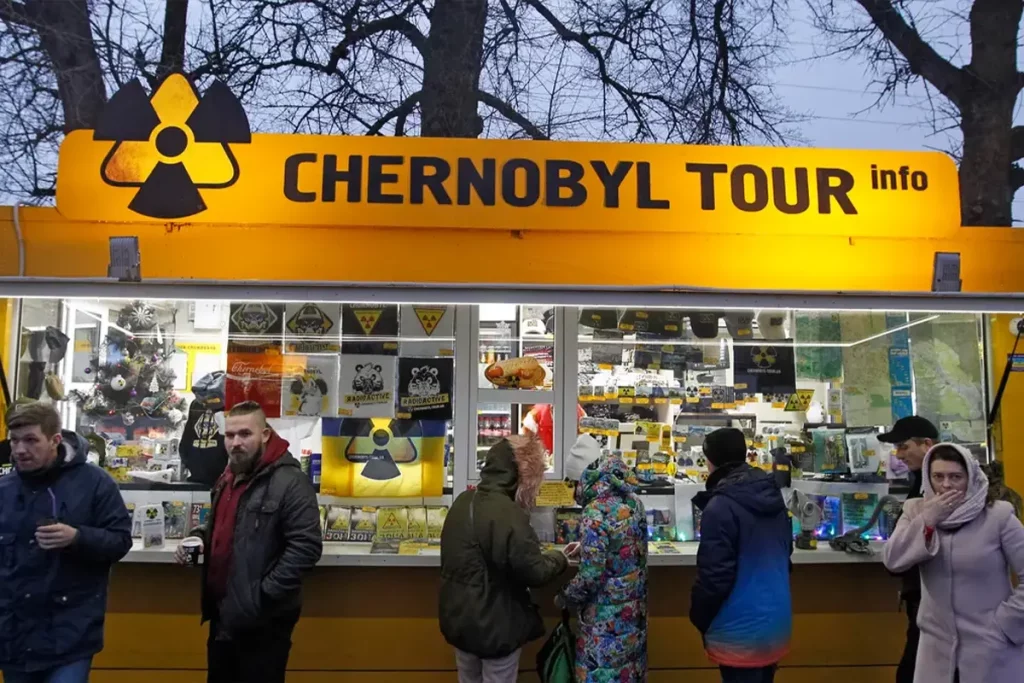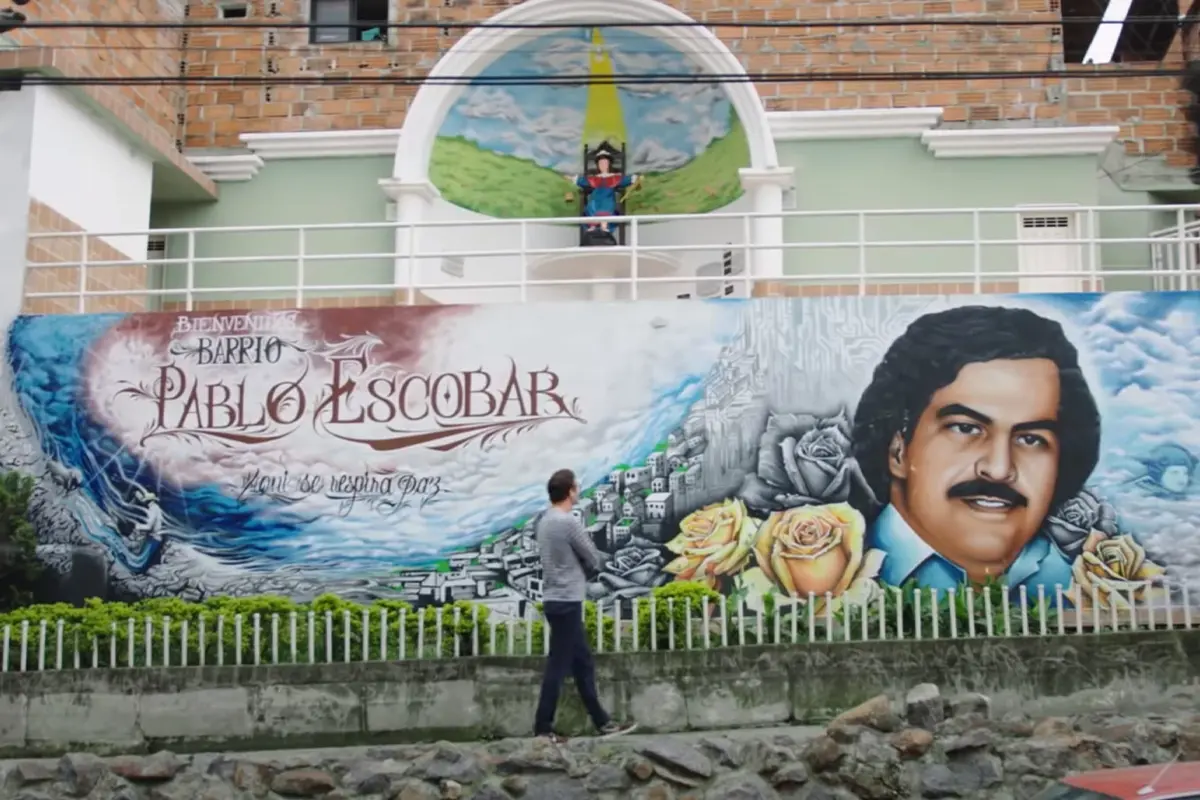How tv series turned dark tourism form a learning phenomenon to the idolization of serial killers, drug lords, and satanic cults – for the fun of it
Dark tourism: the new disturbing trend
A new disturbing trend is emerging in tourism. When it comes to booking holidays, some – increasingly more – make choices that seem unpopular or worrying. Dark tourism, also known as black tourism or morbid tourism, is the trend involving traveling to places linked to death and tragedy. People seem to be ever more interested in and fascinated by tragedy, murders, and danger.
Dream destinations for dark tourists include places like Chernobyl and Auschwitz, but also Medellin, following the footsteps of world-famous narco Pablo Escobar, or Milwaukee, to see the city where the countless murders by serial killer Jeffrey Lionel Dahmer happened. The more disturbing the better. Some go as far as traveling to war zones for the fun of it – whatever the fun may be. New Zealand journalist David Farrier recently investigated the phenomenon in the Netflix series Dark Tourist.
In a striking example of field journalism, he travels around the world following a herd of dark tourists, on the lookout for answers to why people would ever use their hard-earned time off to seek danger. According to the documentary series, it may be a way to feel alive, before going back to the safety of a more traditional, dull existence. This view is however a little simplistic.
A long tradition: dark tourism has history
The phenomenon of dark tourism actually dates way back in time. «There is evidence» says professor of tourism J. John Lennon, «that dark tourism goes back to the Battle of Waterloo where people watched from their carriages the battle taking place».
It goes even further: one of the first forms of dark tourism can be traced back to 16th century England, when people in London went to watch public hangings. Even prior to that, in ancient Rome, people went to watch bloody spectacles in the Colosseum as entertainment. It would seem human beings are just attracted to the morbid, deathly side of life.
Dark tourism to keep history alive and learn
In more recent times, however, dark tourism was also used as a way of keeping history alive and learning from it. Especially after WWI and WWII, visiting the sites of defining tragedies and, for the institutions, opening them up to the public, was a warning not to make the same mistakes again.
Today, although there are no official statistics, the phenomenon seems to be on the rise – there is even a website, Dark-Tourism.com, that is committed to creating a list of dark tourism destinations. Which now reaches more than nine hundred destinations in a hundred and twelve different countries. It also looks like the focus is shifting. From a celebration of history to the realm of pop culture.
Getting darker: dark tourism and the commodification of tragedy
It is quite clear how visiting Auschwitz or Birkenau can be a way of reliving a terrible past that serves as a memento not to ever repeat the same mistakes again. Similarly, visiting Chernobyl can help tourists understand the consequences human mistakes can have when it comes to a delicate environment like a nuclear plant.
Recently, though, dark tourists started to follow Netflix series more than they do big historical events. This has led to a commodification of tragedy. It is more about fashion, these days, than it is about learning. Merchandising and souvenirs follow.
Chernobyl is the perfect example: after HBO aired the Chernobyl series in 2019, local institutions say, the tourism in the area has more than doubled. The government even decided to open a new site, despite the high levels of radiation recorded.
Dark tourism and suffering: the role of TV series
The phenomenon becomes even more worrying when, instead of social tragedies, the subject becomes a serial killer, or a narco for instance. TV shows often serve to make tragedies glamor rather than as a source of information. The case of Dahmer makes it clear. It tells a story of brutal murder and cannibalism, resulting in the death of tens of people.
Yet, after the series, you can find guided tours strolling around Milwaukee, with tourists taking pictures and selfies in front of Dahmer’s apartment and Club 291, where he used to pick up most of his victims. British series The Serpent (2021), about a serial killer drugging and murdering French tourists, is instead bringing crowds to Delhi.

Pablo Escobar: driver for tourism
The same goes for Pablo Escobar. His fame was already ambiguous in Colombia while he was alive – some hated him, some followed the lifestyle he stood for, some had taken advantage of the houses he built for the community and were simply resigned but grateful. After the TV series this life came out, his fame reached a global scale.
The show had, however, a way of idolizing him – and watchers followed. Tourism in Medellin nowadays is disproportionately about Pablo. Escobar’s look-alikes drive people around in cabs pretending to be trafficking, and then drop them in Barrio Escobar – the neighborhood he helped build. Tourists enjoy it, and part of the local population makes a profit. What gets lost in all of this is the atrocity of the murders and tortures he and his henchmen committed.
One of Dark Tourist episodes features Escobar hitman Popeye (aka Jhon Jairo Velásquez Vásquez) who spent twenty years of his life in prison on charges of terrorism, drug trafficking, extortion, conspiracy for terrorist purposes and murder. In the series, Farrier, at that point in a gaze, fittingly describes him like «a very likable man who has done horrible things». It’s the banality of evil – made glamor.
How dark tourism turned from learning to idolizing
This mechanism is not necessarily healthy. TV series push audiences to idolize criminals. Something about the digital display of violence, murder, and unlawfulness in general, seems to be particularly appealing. It could represent a distraction from the boredom of everyday life.
Dark tourism, initially a tool to learn by witnessing, to understand history and avoid repeating it, has turned into a money-machine. More and more series are produced to idolize illegal and tremendous behaviors, disregarding the pain of all those who suffered, and still suffer. As part of this process, the sites that were initially created for commemoration, are also often disrespected – take the infamous case of selfies taken by tourists at the Holocaust memorial.
Similarly, we seem to have turned into a society that, instead of sympathizing with the victims of a crime, idolized the criminal. A group of women interviewed by Farrier at a Milwaukee bar said: «women love bad boys, and serial killers are the ultimate bad boys». In the meantime, streaming platforms turnover grows.
Dark tourism and slum tourism: an ethical difference
Dark tourism is not all the same. Enthusiasts especially are keen on making a difference – setting boundaries, reclaiming the phenomenon. On the official website, it is stated clearly: «please note from the start: dark tourism, as understood on this site, does not include anything voyeuristic (like ‘slum tourism’), nor does it include ‘war tourism’ (travel to current war zones) or other ‘danger tourism’, nor ‘ghost hunts’ or anything ‘paranormal’, nor battle re-enactments».
The site, instead, «aims to promote (and also ‘rehabilitate’) dark tourism». After wrongful reports in the media and the transformation caused by commodification. Dark tourism, they claim, is the curiosity towards learning about tragedies in the past, while slum tourism is, for instance, what Escobar’s fans do: going to poor neighborhoods as if they were museums – poverty and social difficulties on display.
The United Nations, in fact, reported that more of a quarter of the world population today lives in slums. The moral dilemma is whether tour guides taking white privileged vacationers around the slums of Manila or Mumbai are about raising awareness or merely a case of voyeurism at the expense of people’s suffering. It is first of all a matter of ethics. Especially when destinations affect and concern contemporary tragedies.
War zones: dark tourism and danger
The most striking case is that of war tourism: people vacationing in active or former war zones. It is about traveling to unveil the effects and impact of a conflict in a specific country. The last, most recent fashionable destination is Ukraine. Ukraine’s own website has now opened «tours to war-torn cities», launching initiatives of dark tourism in the area.
Ukraine is already experiencing dark tourism because of Chernobyl. The idea is to raise awareness and give travelers an idea of the very real impact this mediated conflict has on people’s lives. The question of ethics however remains open. If a curiosity for the deathly aspect of life is somewhat natural, it is mandatory to ponder how those are satisfied – not to allow mechanisms of commodification of pain affect destination choices.
Dark Tourism
Dark tourism (also Thana tourism (as in Thanatos), black tourism, morbid tourism, or grief tourism) has been defined as tourism involving travel to places historically associated with death and tragedy. More recently, it was suggested that the concept should also include reasons tourists visit that site, since the site’s attributes alone may not make a visitor a ‘dark tourist’. The main attraction to dark locations is their historical value rather than their associations with death and suffering. Holocaust tourism contains aspects of both dark tourism and heritage tourism.



















